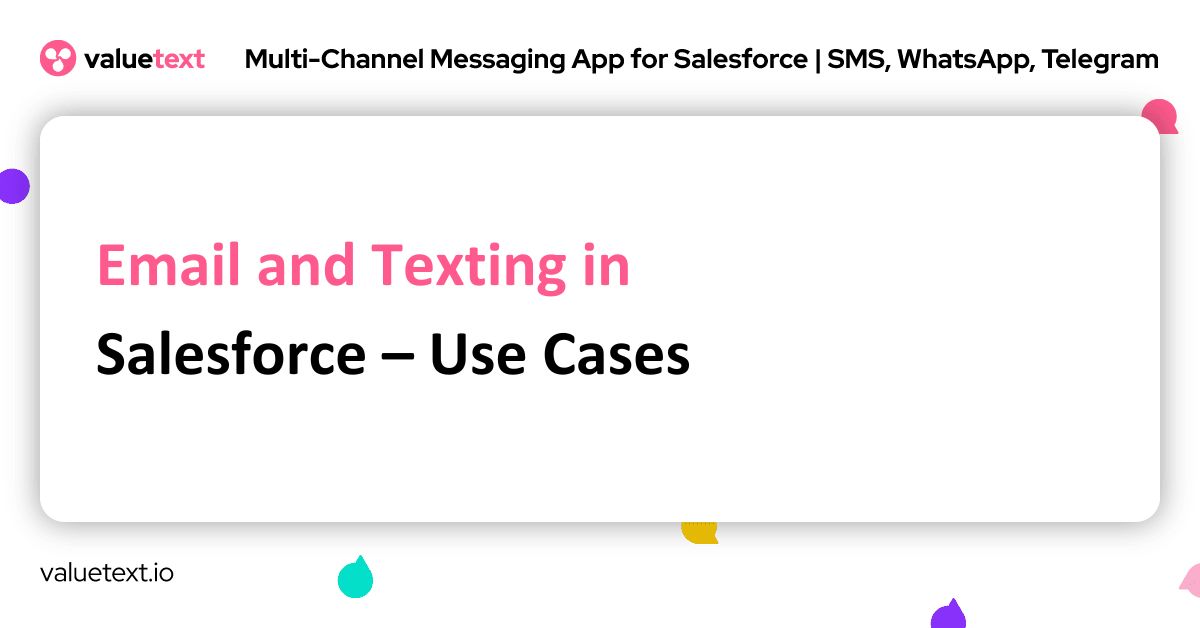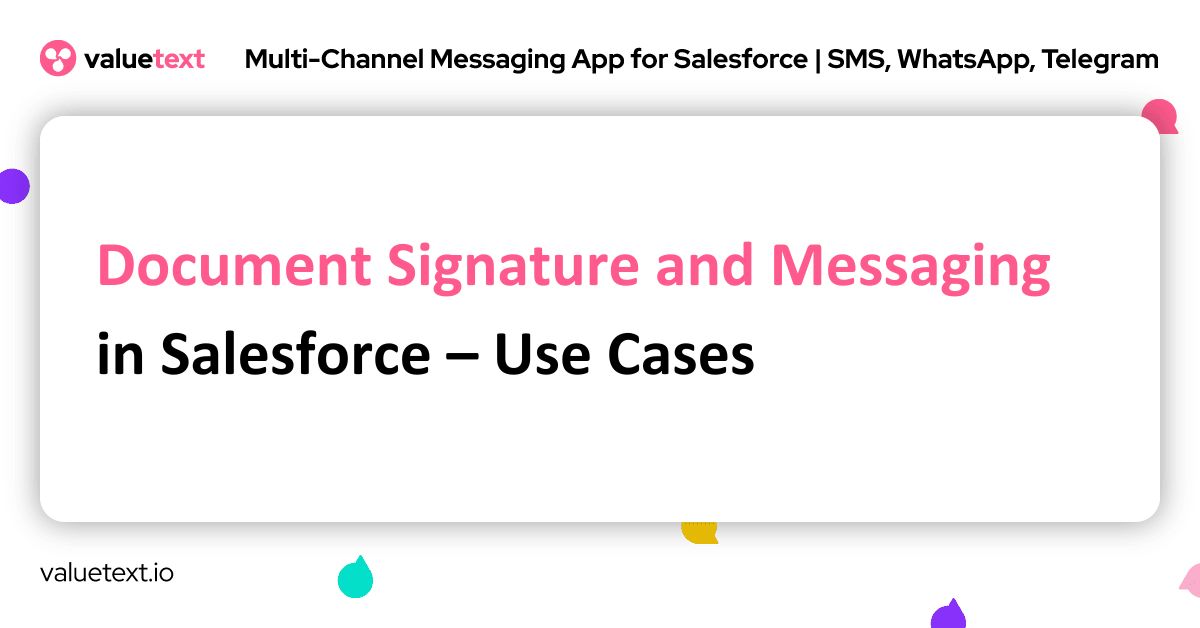15 May

Salesforce Admins: Messaging Is Not Just a Checkbox
What are the most common messaging mistakes Salesforce Admins make?
Salesforce Admins often overlook key elements of messaging workflows including personalization, timing, ownership, compliance, and performance tracking. These issues can hurt engagement and lead to operational inefficiencies. Discover the top messaging mistakes Salesforce Admins make—plus quick fixes for timing, templates, and compliance.

Here's how to identify and fix them.
You build flows, configure triggers, and manage integrations — but messaging often ends up being the least prioritized piece in the stack.
You build flows, configure triggers, and manage integrations — but messaging often ends up being the least prioritized piece in the stack.
In 2025, that’s a problem.
Messaging mistakes Salesforce Admins make can quietly erode customer experience and revenue. Too often, templated alerts, bad timing, and compliance gaps slip under the radar. And when it fails, it’s not just a delivery issue. It’s a lost opportunity to engage, convert, or retain a user. Here are the top 5 messaging mistakes we see in Salesforce setups — and how smart admins are fixing them.
Final Thoughts – Fixing Messaging Mistakes Salesforce Admins Make
1. Using Generic Templates That Sound Robotic
“Hi Lenin, just a reminder that your case is now closed.”
This kind of message lacks context, tone, and value.
Better example: “Hi Lenin, your support case on ‘Workflow Rule Conflicts’ has been resolved.
Let us know if the solution worked for you, or if you need anything else. You can reply directly to this message or click here to reopen the case.”
This version is clear, specific, and invites action.
Why it’s a mistake:
- Customers ignore it
- Feels automated and impersonal
- Offers no incentive to take action or reply
How to fix it:
- Include behavioral context (e.g. support case topic, last product used)
- Add micro-personalization beyond name: location, plan tier, usage pattern.
- Give users something to do (survey link, feedback prompt, help doc)
Pro tip: Write like a human, not a bot.
2. Are Your Messages Triggered at the Right Time?
A follow-up message that arrives hours or days after the event it references is a wasted interaction.
Why it’s a mistake:
- Delays make messages less meaningful.
- Real-time expectations are now standard.
How to fix it:
- Use event-based triggers tied to key actions (e.g. post-demo, plan change, missed meeting)
- Sync with Slack/WhatsApp/SMS for fast-response channels
- Avoid batching messages into once-a-day workflows
3. No Clear Ownership of Messaging Strategy
Marketing writes the copy. Sales tweaks it. Ops implements. Support sends it. Sound familiar?
Why it’s a mistake:
- No single owner = inconsistent tone, poor tracking, risky delivery
- Breakdowns between departments cause delays or duplications
How to fix it:
- Assign a messaging lead (RevOps, Admin, or Customer Experience Manager)
- Centralize templates and message logic in one platform
- Use shared analytics to track performance across teams
Tools like ValueText make this easier by embedding control inside Salesforce.
Example: One of our customers, a fast-growing SaaS provider, used ValueText to unify their messaging workflows. Previously, Sales and Support were using different templates and tools, causing mixed messages and missed follow-ups. After implementing ValueText, they centralized message creation and delivery within Salesforce, with shared analytics dashboards for all departments. This reduced message errors by 40% and improved response rates across the board.
4. Overlooking Compliance & Opt-Out Workflows
If your SMS or WhatsApp messages don’t have opt-out handling, you’re exposed to legal risk.
Why it’s a mistake:
- Ignoring compliance rules like GDPR (General Data Protection Regulation) or TCPA (Telephone Consumer Protection Act) can lead to legal trouble and financial penalties.
- Customers lose trust when they can’t easily opt out.
How to fix it:
- Implement opt-out logic by region and channel.
- Store message consent as a field in Salesforce.
- Automate suppression of non-consented users from workflows.
> ⚠️This isn’t optional. It’s table stakes.
💡GDPR SMS compliance guide
5. Not Tracking Message Performance
Most teams don’t know which messages are working — or why.
Why it’s a mistake:
- You can’t optimize what you don’t measure
- Poor performers continue to run unchallenged
How to fix it:
- Track open rates, clicks, response time, and outcomes
- A/B test high-volume messages (onboarding, renewals, support updates)
- Build a quarterly message audit checklist
such as :
Are messages personalized based on user behavior?
Are opt-outs and compliance rules in place?
Are open/click/reply rates improving over time?
Are templates consistent across teams?
Are we A/B testing high-volume flows?
Are messaging metrics aligned with campaign goals?
Tip: Message analytics should be reviewed alongside campaign performance — not kept separate.
Messaging Is a Strategic Lever — Not a Maintenance Task
Salesforce admins today play a critical role in shaping user experience, not just managing system settings.
Fixing these 5 messaging mistakes doesn’t just clean up your org — it improves your NPS (Net Promoter Score) conversion rate, and time-to-resolution.
Messaging is how you show up. Make it count.
CTA: Want to audit your Salesforce messaging and get a ready-to-fix checklist? Fix these messaging mistakes Salesforce Admins struggle with, and your org turns messages into revenue engines.
→ Book a free strategy call with ValueText
Author : Nikhil — Senior Client Consultant, ValueText
Nikhil leads global marketing and Salesforce integration initiatives for ValueText’s SaaS messaging platform. He writes high-impact blogs, guides new users through onboarding and training, and drives adoption of SMS / WhatsApp automation across industries. Passionate about the crossroads of marketing, technology, and client success.
Other useful articles







